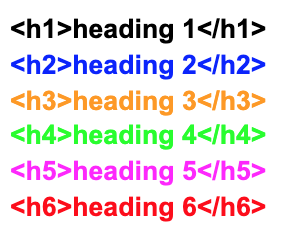
Demystifying SEO—A Comprehensive Guide to Search Engine Optimization
In the digital age, having a strong online presence is important. Understanding search engine optimization (SEO) is crucial for success online, whether you’re a business or an individual. In this blog, we will answer your most frequently asked questions surrounding search engine optimization.
TABLE OF CONTENTS
What is search engine optimization, and what exactly does it do?
Is SEO paid or free?
What are SEO examples?
What is search engine optimization, and what exactly does it do?
SEO (Search Engine Optimization) aligns marketing efforts with the way people search for information online, making it a cornerstone of digital marketing strategies. SEO does this by improving your website and content to rank higher in search results and get more organic traffic. It aims to make your content easily discoverable on search engines like Google, Bing, and Yahoo. It involves various techniques and strategies aimed at attracting organic (unpaid) traffic to your website. These strategies make your content more relevant and appealing to search engine algorithms.
Is SEO paid or free?
Search engine optimization encompasses both paid and free elements. The primary focus, however, is on organic (unpaid) search results.
You don’t pay search engines to rank higher naturally. However, there may be expenses for SEO tools. Additionally, creating content and reaching out may also incur costs.
What are SEO examples?
- Optimizing your website’s meta tags, including title tags and meta descriptions.
- Creating high-quality blog posts and pages with relevant keywords.
- Building high-authority backlinks from reputable websites.
- Improving website load times and mobile responsiveness.
These examples demonstrate how search engine optimization works in real-world applications.
What are the four types of SEO?
We can categorize search engine optimization into four main types:
- On-Page SEO—This involves optimizing individual web pages for specific keywords, improving content quality, and optimizing meta-information.
- Off-Page SEO—It focuses on building backlinks and enhancing the online reputation and authority of your website.
- Technical SEO—This aspect improves the website’s infrastructure and performance, ensuring it is search engine-friendly.
- Local SEO—Tailored for local businesses, it enhances visibility in local search results, crucial for attracting nearby customers.
Understanding these types of search engine optimization helps you develop a holistic optimization strategy.
What are the three main areas of SEO?
The three primary areas of SEO are:
- Technical SEO—This focuses on ensuring your website is technically sound, including aspects like site speed, mobile optimization, and structured data.
- On-Page SEO—It involves optimizing individual pages by strategically placing keywords, improving content quality, and optimizing meta-information.
- Off-Page SEO—This includes activities like building backlinks from authoritative sources and enhancing your website’s online reputation.
What are your top 3 seo techniques?
Three effective search engine optimization techniques include:
- Keyword Research—Identifying relevant keywords with search volume and aligning your content strategy with them
- Content Creation—Developing valuable, informative, and engaging content that addresses the needs and questions of your target audience
- Link Building—Getting good backlinks from trusted sites to boost your domain authority and enhance your site’s visibility in search results
What are the five seo elements?
The five essential search engine optimization elements are:
- Keywords—Selecting and strategically using keywords relevant to your content and target audience
- Content—Creating high-quality, user-focused content that satisfies search intent
- Links—Building authoritative backlinks and internal links
- Technical Structure—Ensuring your website is technically sound, with fast loading times and mobile optimization
- User Experience—Enhancing the overall user experience on your website, making it easy to navigate and engaging for visitors
What are the five ingredients for SEO?
Effective search engine optimization requires five key ingredients:
- Quality Content—Content that is informative, valuable, and user-focused
- Keyword Optimization—Strategic use of keywords in content and meta-information
- Backlinks—Building high-quality backlinks to establish authority
- Technical Optimization—Ensuring your website is technically sound and optimized for search engines
- User Experience Enhancement—Providing a positive user experience on your website
How long does it take to rank #1 on Google?
The time to rank #1 on Google depends on competition, industry, and the quality of your SEO efforts. It can range from several months to over a year of consistent optimization and content creation.
What are common SEO mistakes?
Common search engine optimization mistakes to avoid include:
- Keyword stuffing—Overloading content with keywords
- Neglecting mobile optimization—Not optimizing for mobile devices
- Ignoring technical SEO—Neglecting website structure and performance
- Failing to create quality, user-focused content—Prioritizing quantity over quality.
Can I do SEO on my own?
Yes, individuals and small businesses can perform search engine optimization on their own. You can learn and implement basic SEO techniques, such as optimizing on-page elements and creating high-quality content. However, for more advanced strategies and in competitive industries, consulting with search engine optimization experts or agencies will be beneficial.
Contact the experts.
Search engine optimization is a dynamic and essential aspect of online marketing. By learning and using effective strategies, you can make your website more visible, attract more visitors, and achieve your online goals. Are you ready to get your business search engine optimized? Contact the experts at Root & Roam today!



